Not knowing how long we’d stay in Cairo, Dave and I knocked out the must-do straight off regardless of the heat and Ramadan (we generally refrained from eating during the day as well). First were the pyramids at Giza, and of course the next thing would be the Cairo Museum. This part is perhaps less adventurous, but the sheer amount of intact artifacts from civilization thousands of years old (not to mention mummies) made it worth the trip.
Of course, first we had to get there.
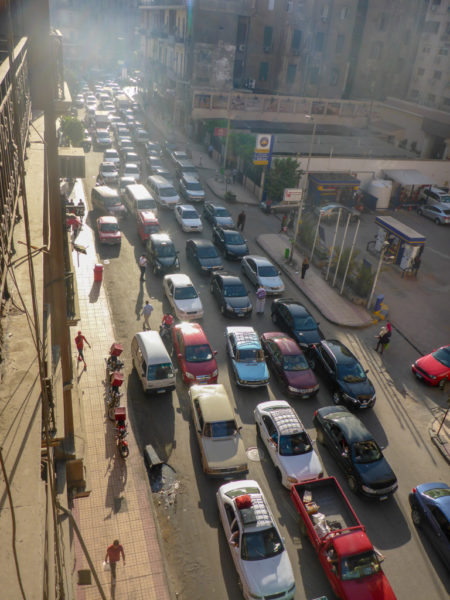
The police presence was ubiquitous, and the museum was no exception. Like the Pyramids complex, there were traffic control barriers up and a police checkpoint out front. We walked through the crazy heat, past the AK-toting cops, to the museum entrance. To go inside anywhere official in Cairo you have to go through metal detectors, complete with x-ray machines for the bags. The Egyptian culture seems not to include any concept of queuing or going in order — you just press through and take your chances or you will literally never get anywhere. But once inside, it was like a beautiful warehouse chock full of thousands of years of Egyptian history.
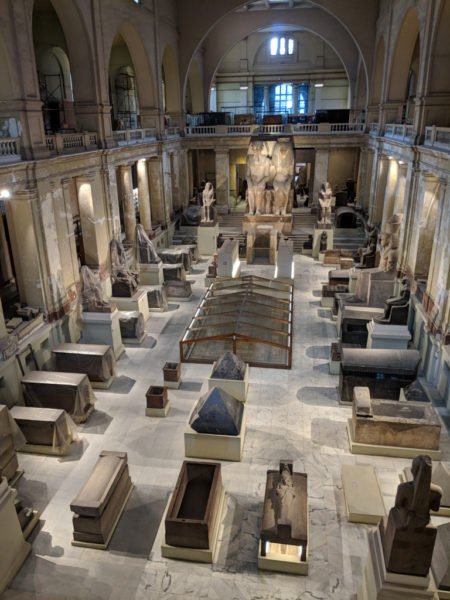
The two-story museum is split into two levels, organized like a ring going clockwise through the centuries and millennia. We started with the oldest of what people recognize as the Pharaonic kingdoms. The history is generally split into Old Kingdom, First Intermediate, Middle Kingdom, Second Intermediate, and New Kingdom, clockwise around the first floor.
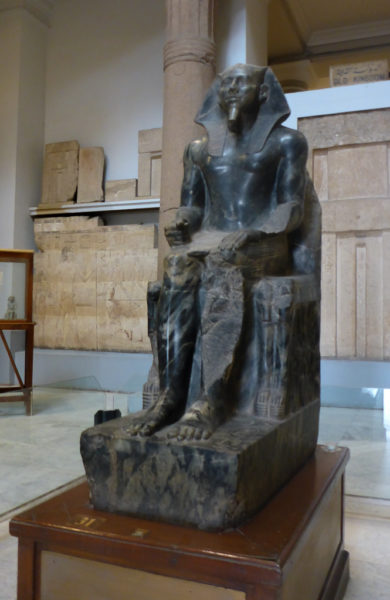
There were so many statues and stelae, everywhere you turn a stony king or queen was glaring at you. Sarcophagi were ubiquitous, too.
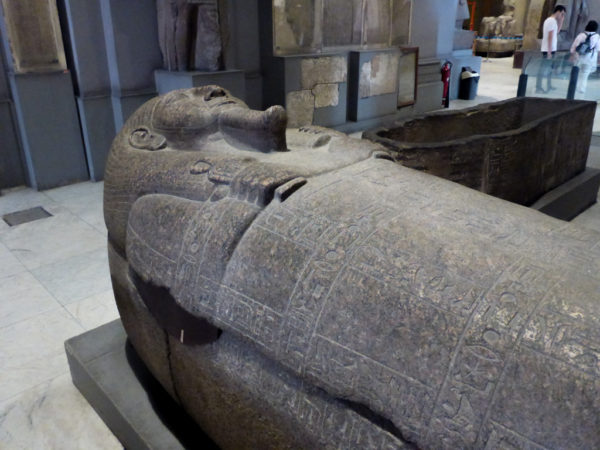
As you’d expect over thousands of years, the art style changed over time, and some pharaohs made bolder moves than others. Amenhotep IV changed his name to Akhenaten to tie himself to the sun deity, which he elevated above all the other “mere” gods. He introduced what was essentially monotheism towards this sun deity and a new art style to celebrate it. They got rid of it in the decades after he died, destroying most of his statues and referring to him as an “enemy” or “criminal”.

They have so many artifacts here that many are still in wooden shipping crates, and most are unlabeled.
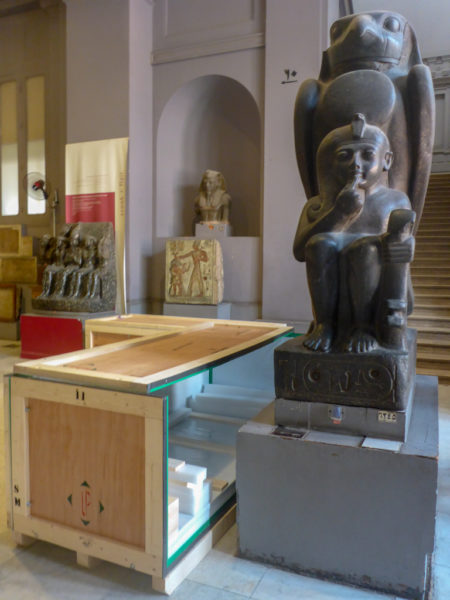
Did you know the Egyptians carved hieroglyphics into wood as well as stone? Seems obvious in retrospect but I’ve never seen any before.

Of course, the national museum of Egypt wouldn’t be complete without mummified human remains.
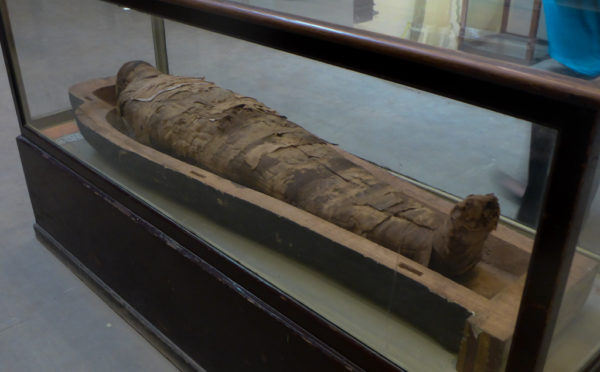
This was one of the only mummies we were allowed to photograph. There is a royal mummy display with 9 or so kings and queens on display, but photographs are forbidden in that room. They were in special display cases, and partially unwrapped. Some looked very peaceful, some were very desiccated, and one showed gruesome battle wounds — his face misshapen and features distorted with big holes in his skull.
The famous boy king, Tutankhamen, was not among them. His mummy is buried in his tomb in the Valley of the Kings. However, items from his tomb feature prominently in the museum, near to the statues of his famous father, the aforementioned “criminal” Amenhotep IV/Ahkenaten. Arguably the most interesting of these items is this massive golden chest found containing King Tut’s organs.
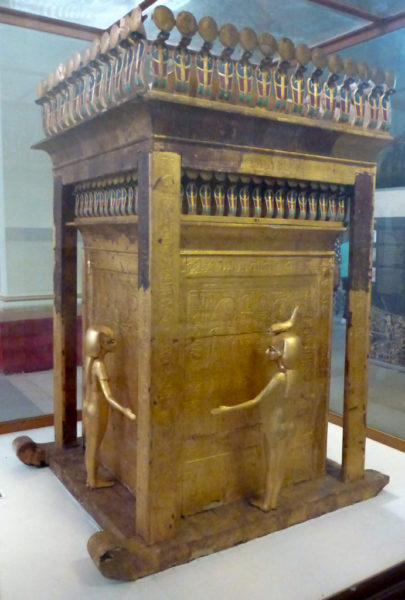
Promptly at 3pm, we were shooed out of the museum (because it closed, not due to our misbehavior). Dave and I decided to walk across downtown to the area known as Islamic Cairo.

Islamic Cairo feels like one giant market. My photos don’t do it justice — some parts were so crowded and tight that I couldn’t get my camera out. We passed through the textile district, the toy district, the sweets district, and the woodworking district, at a minimum (they blend together a bit). Finally it opened up a bit.
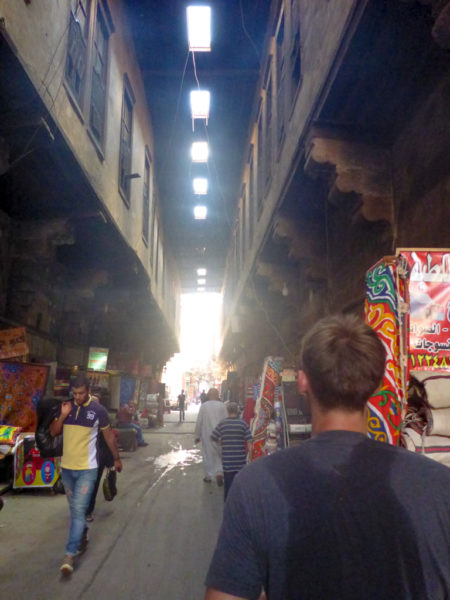
It’s a giant maze of covered alleys. We walked for an hour at least through them.

I’m glad I had my compass. We did take a few wrong turns on our way out, though.
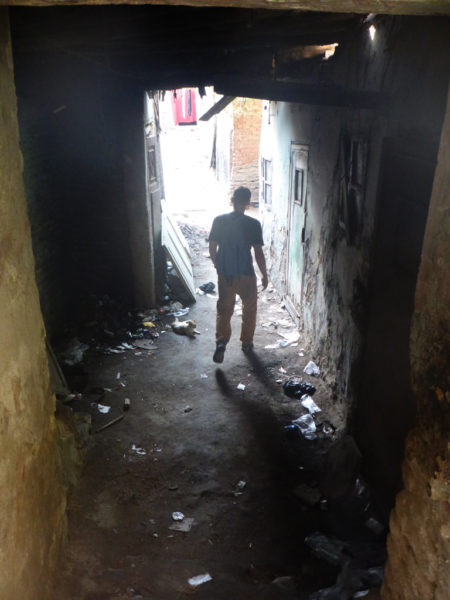
Next time: Coptic Cairo and a stone cat-man!
